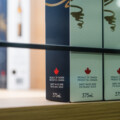Are we in a state of late-wine capitalism? Have the same forces of polarized wealth distribution that fuel inequality across the world finally hit the wino world? Or am I just cranky for having read through the 2023 Liv-Ex Classification?
London-based Liv-Ex is a secondary wine market. It’s where you can sell your collector desirable wine. They track their prices and bundle what got sold for what into a press release once and a while and send it to wine hacks like me, which in this case would be a successful public relations exercise if a secondary wine market existed in this country.
Because of provincial liquor laws, there is largely no secondary wine market in Canada: you buy and it’s yours forever—unless you or your heirs give it to charity in exchange for a tax receipt, which is kind of the ultimate government insult added to injury. Alberta is, as always, the free market exception.
There are not a lot, but there are always a few wines on the list that I have tasted in the last few years. The pleasure of recognition I experience from seeing those wines on the list is quickly diminished by the realization that a case of them would cost more than the airfare to get me to the winery that made them.
Early in my career as a food and wine journalist, I interviewed Janice Robinson. Even then, almost twenty years ago, she bemoaned that the great wines of the world were only being tasted by super critics like her or the ultra-rich. The consolation though, she argued, was that the general quality of wine had improved so much that the average consumer had never had it so good. I thought of it as a kind of wino social contract.
I worry lately that that social contract has been unwound. In law school, I was taught that a contract is essentially a meeting of the minds. I worry that in 2023, between wine producers and consumers, we may have collectively lost our minds. There is an increasing gap between what it costs to make a decent bottle of wine and what a consumer can reasonably pay.
Wine costs money to make, especially if you’re a small, family-owned producer making it where you grow it. There is the high cost of wine country real estate, but even if that doesn’t have to be serviced, all the other significant inputs are precisely the things that make the news about inflation: energy, labour, and whatever interest rates are applied on the capital investment in expensive machinery and facilities.
When interest rates were low and money was cheap, those costs were manageable and wine consumers had money in their pockets. Decent wine at $20, even $15, was plentiful. Then, the pandemic hit, causing supply chain shortages while demand peaked from thirsty people stuck at home with little to spend their money on. Then, the pandemic was over and the real party started and demand truly peaked, not just at home but out at restaurants that sold even more expensive wine.
Now that the party is over, interests are high, and cash is expensive, we’re likely in for a painful correction. That sounds good for consumers, but it’s probably not great if it means fewer producers. And a price stabilization will take time as the trade tries to recoup sunk costs.
Still, there are strategies to find value and save money during this new normal. One might be: big is beautiful. If the last twenty years in the wine world have been largely about the ascendency of smaller boutique producers, maybe the next few years will see a resurgence of interest in larger wine-making operations.
This idea struck me while I cycled through several bottles of the 2021 Acheri Barbera Langhe, which is currently stocked at my local Ontario Liquor Control Board retail monopoly outlet for a very reasonable $16.95. If you can find it, look for silky grape tannins that wrap around blackberry and plum fruit bound up in a refreshing food-friendly package, while you’re congratulating yourself on a bargain from one of Piedmont’s great wine families.

Barbera was known as “the people’s wine” in Piedmont, Italy, where it dominated red wine grape plantings. But since the rise of Barolo and Barbaresco, much of the Barbera once grown in those parts has been replaced with Nebbiolo to make those pricier wines. Good for Matteo Ascheri for continuing production and doing it at a fair price.
No doubt efficiencies come with the size of Ascheri’s operation, but another factor that keeps the price down is geography. This Barbera carries the simple application of Langhe DOC. This means Ascheri could source grapes for it from a larger all over the region, rather than a designated one, like Barbera d’Alba DOC.
It also means that wines in the simple Langhe DOC appellation are not subject to as many rules as the more fancy Barbera d’Alba. Those rules typically involve time and money, as in leaving wine to age in expensive barrels. With Barbera, that’s fine. Its natural acidity and juicy fruit qualities do not require aging per se, and it’s a fun quaffer when left alone and opened after only a few years.
What’s true in Piedmont tends to be true across the wine world, especially in appellation-obsessed countries like Italy and France. Producers who can afford to—in other words, larger ones—will make simpler less “classified” wines alongside their Grand Cru or Gran Selezione ones. When times are tough, size matters.
Recommended for You

Malcolm Jolley: The comfort of familiar favourites—or the fun of finding new wines?

Malcolm Jolley: An ‘Elbows Up’ wine project everyone can get behind

Malcolm Jolley: Need some summer wines? Look no further than the food-friendly, low-sugar sippers of the sunny Southern Rhône

Malcolm Jolley: Need a date-night drink? French Northern Rhône wines are worth the investment




